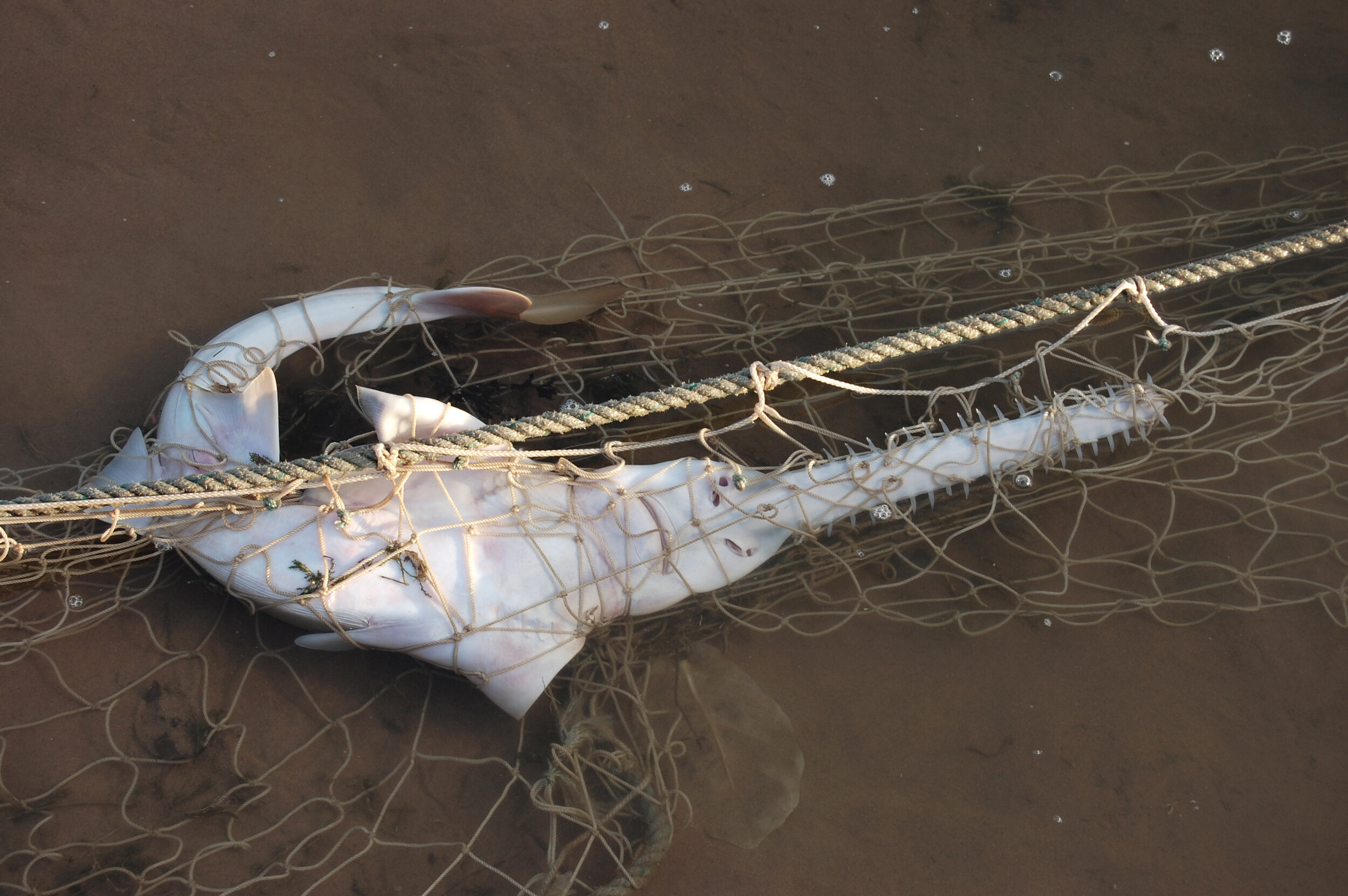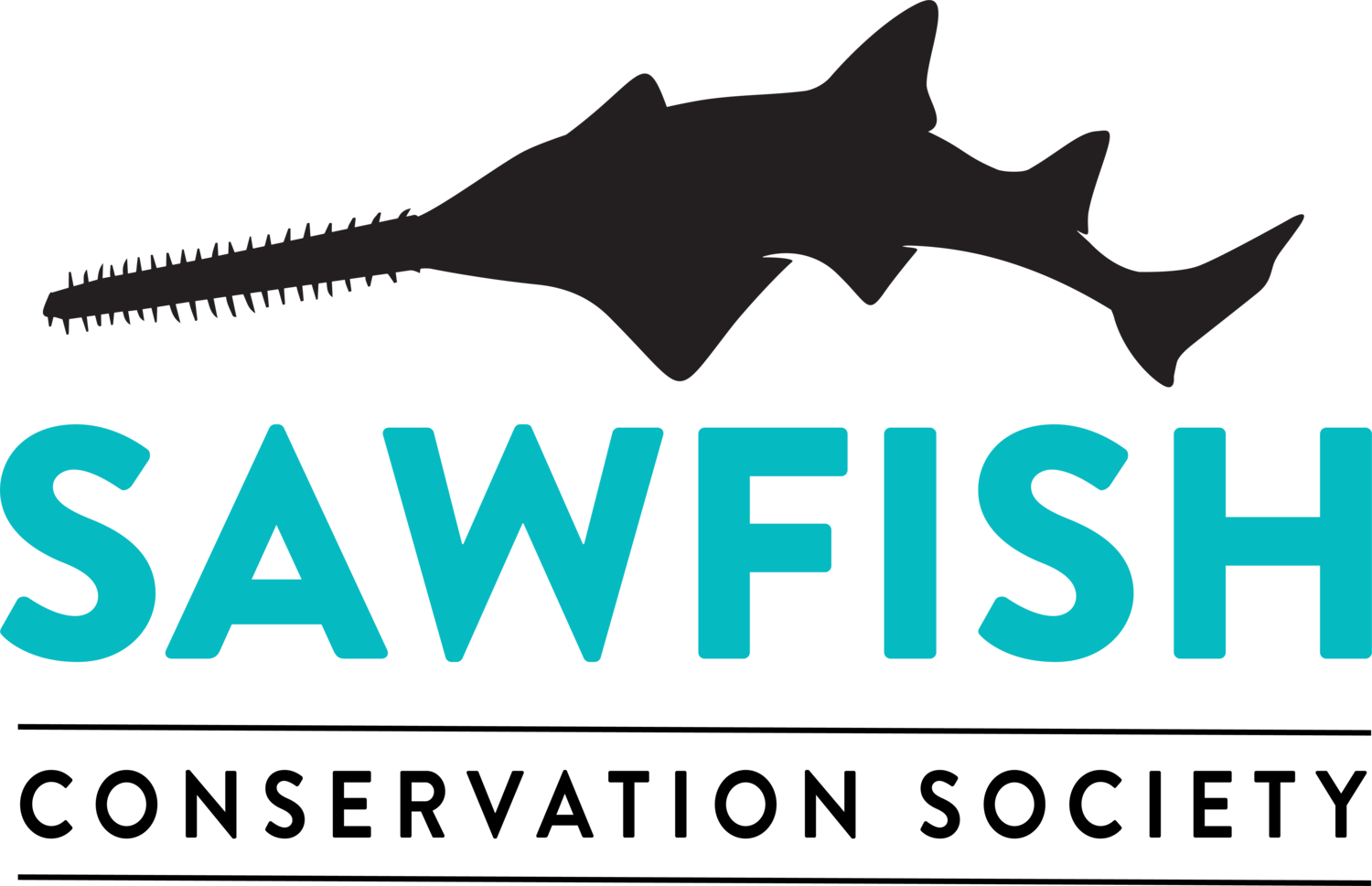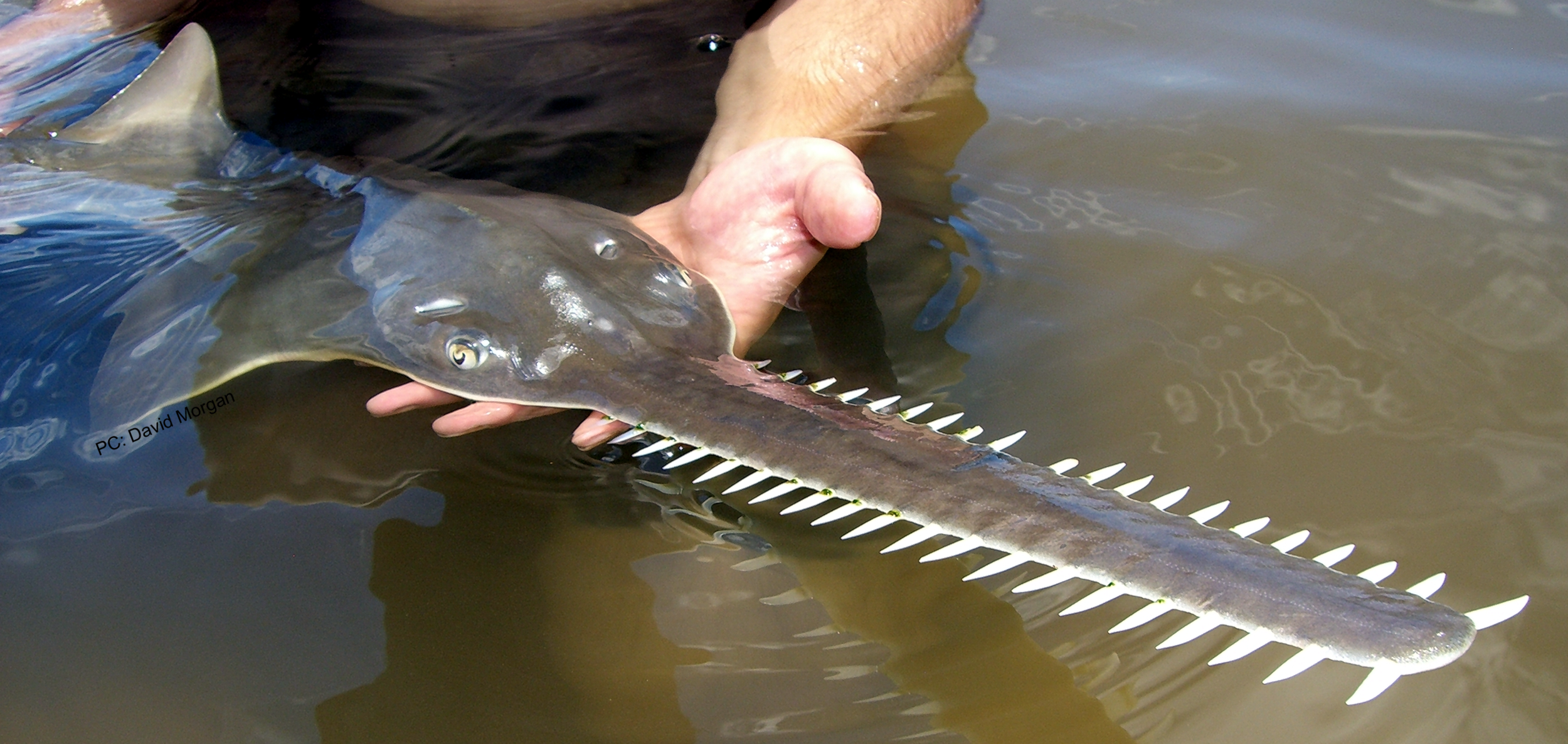
SAWFISH CONSERVATION
Sawfish are nearly extinct due to many human caused and preventable threats. Some of these threats include habitat modifications, fishing, the shark fin trade, and pollution.
Sawfishes have declined in number and range have substantially declined over the last 100 years. As such, all species are now listed as Endangered or Critically Endangered by the International Union for the Conservation of Nature (IUCN), and are listed under Appendix I of CITES, which prevents international trade. Sawfishes are also federally protected in a number of countries, including the USA, Australia, India, Qatar, Bahrain, and Brazil.
A number of groups are helping to conserve sawfish through research, public education, and land and fishery management. You can help conservation efforts by supporting these groups, being responsible fishers, and by protecting your environment.
Give sawfish a helping hand!
Release and report sawfish you encounter without removing the saw
Protect sawfish habitat (mangroves, rivers, coastal waters)
Pick-up garbage, fishing lines, and nets
Educate others about sawfish
SAWFISH THREATS
Fishing gear and bycatch: Sawfish are occasionally caught as bycatch, the unintentional capture of fish, in many commercial fisheries throughout the world. Sawfish are easily entangled in trawl nets, gill nets, and cast nets, which are commonly used around hte world. Removing sawfish from these nets can be difficult due to the large size of these fishes and their degree of entanglement. While responsible fishers practice catch and release, others have been observed to kill the sawfish or cut-off the rostrum to remove the sawfish from the net. Sawfish have been observed to live for a short time after their rostrum has been removed, but it is unclear how long they can survive without their primary method of capturing prey.
Sawfish can also become easily entangled in discarded fishing lines, ropes, boat bungee cords, and plastics because of their toothy rostrum. These lines can leave deep cuts, which leave sawfish open to infection. Additionally, entangled sawfish may die due to the inability to catch prey or defend themselves.
Targeted fishing: It is illegal to target or harm sawfish in countries like the USA, India, Brazil, and Australia. However, sawfish are still taken illegally for their meat, rostra, and fins, which are prized in the shark fin trade.
Habitat modification: Juvenile sawfishes use nearshore habitats in rivers and estuaries as nurseries. Alteration of these habitats may impact the successful survival of juvenile sawfish into adulthood. Habitat alterations, such as removal of mangroves, destruction of creeks, or damming of rivers may result in poor water quality, limit habitat and prey availability and accessibility, and increase exposure of sawfish to predators making for an undesirable nursery grounds. Adult sawfish have also been observed to frequently inhabit nearshore areas and are also likely to be impacted by such changes. Although not all changes to nearshore environments will be detrimental to sawfish, it is important that the potential influences of such changes be investigated prior to the development of these areas. This is especially important in areas that are deemed 'critical' for the survival of these species.
SAWFISH POPULATION STATUS AND TRENDS
The International Union for the Conservation of Nature (IUCN) lists all sawfish species as Endangered or Critically Endangered, which means that these species face an extremely high risk of extinction in the wild. This classification is based on the best available scientific data, which is used to determine if the species meets any of five criteria: reduction in population size, small geographic range, a low number of mature individuals in the population, a combination of low number of mature individuals with problematic population structure, or a high probability of extinction within a certain time period.
Evidence suggests that all species of sawfish have declined in number and range. In Florida, USA, the smalltooth sawfish (P. pectinata) population has decreased by 95% within the last century (Simpfendorfer 2002). However, this population now appears to be slowly increasing (Carlson and Osborn 2012). Many populations within Africa and Asia are believed to have been extirpated (i.e. become extinct in specific regions), while the range of sawfishes in other areas (e.g. USA, Australia) have been greatly reduced. While Australia and USA appear to be the last strongholds for sawfishes, sawfish populations in other countries like Brazil and Bangladesh show potential as sawfish sanctuaries.
SAWFISH CONSERVATION
International Protection: All sawfish species are protected under CITES Appendix I, which prohibits the international sale or trade of sawfish parts.
Specific Protection and Recovery Plans: Currently P. clavata, P. pristis, and P. zijsron are listed on the Environment Protection and Biodiversity Conservation Act (1999) in Australia, making them illegal to harvest in federal waters. All Australian species are also protected in Western Australia and Queensland state waters, as well as in the Northern Territory, with exception of A. cuspidata. All sawfishes are protected under India's Wildlife Protection Act (1972) as of 2001. Federal protection was also given to P. pectinata and P. perotteti (now P. pristis) in Brazil in 2005. Total protection has been given to P. zijsron in Qatar and Bahrain. All sawfishes are listed under the Endangered Species Act (ESA) and are protected in the USA.
Along with the Sawfish Conservation Society, a number of dedicated research groups, government and non-government agencies, and aquariums are undertaking the challenge to conserve and recover sawfish populations throughout the world through sawfish research, public education, species recovery plans, and sawfish habitat preservation, to name a few. Various aquaria are also involved in the breeding of sawfishes. In 2012, the Atlantis aquarium in the Bahamas was the first facility to successfully breed sawfish.
HOW YOU CAN HELP SAWFISH
Educate yourself.
Educate yourself and others about sawfish - You've already done that by coming to this site, now time to spread the word!
Participate.
Participate in a beach or watershed cleanup - All waterways lead to the ocean, and so does all its trash. Whether you're near the beach or not, take part in a cleanup this year!
Support sawfish research.
There are plenty of great scientists out there right now trying to answer some of the questions you may still have about sawfish. Support those groups and their research in any way you can.
Contact political leaders.
Contact your political leaders - Phone calls speak louder than emails and emails speak louder than letters. Regardless, let your political representative know how you feel about sawfish protection.
Fish responsibly.
Fish responsibly - Follow the fishing regulations in your area and always properly dispose of your fishing line or rope. If you spot or catch a sawfish while fishing, make sure you let scientists know.
Share your talents.
Do what you do best. Use your talents, whether it be singing, writing, photography, etc., to educate others about sawfish and sawfish conservation. As stated by marine scientist Sylvia Earle, "use your power...dream it up, do something that you really think can make a difference, but then don't just think about it, do it".


